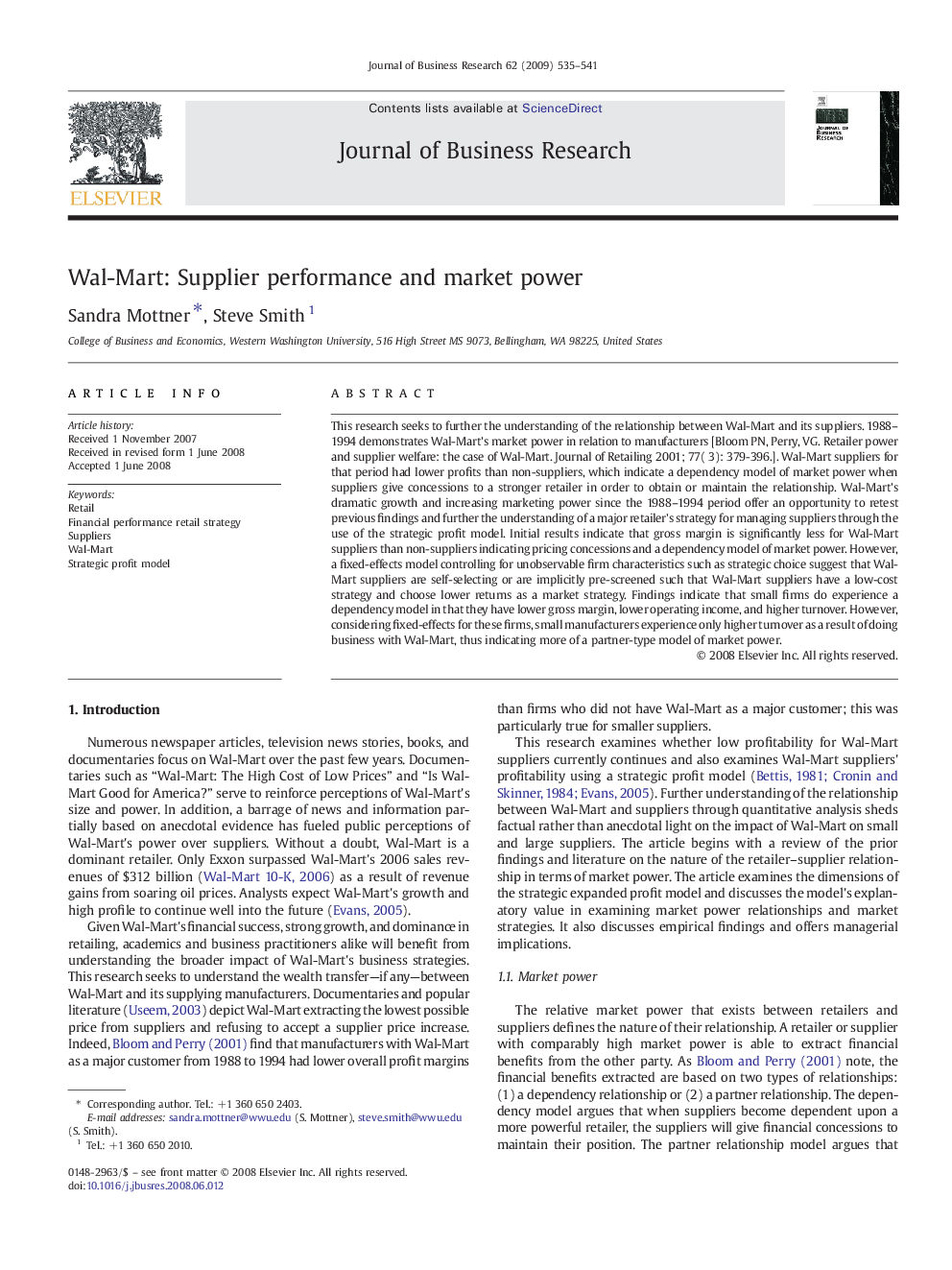| Article ID | Journal | Published Year | Pages | File Type |
|---|---|---|---|---|
| 1018539 | Journal of Business Research | 2009 | 7 Pages |
This research seeks to further the understanding of the relationship between Wal-Mart and its suppliers. 1988–1994 demonstrates Wal-Mart's market power in relation to manufacturers [Bloom PN, Perry, VG. Retailer power and supplier welfare: the case of Wal-Mart. Journal of Retailing 2001; 77( 3): 379-396.]. Wal-Mart suppliers for that period had lower profits than non-suppliers, which indicate a dependency model of market power when suppliers give concessions to a stronger retailer in order to obtain or maintain the relationship. Wal-Mart's dramatic growth and increasing marketing power since the 1988–1994 period offer an opportunity to retest previous findings and further the understanding of a major retailer's strategy for managing suppliers through the use of the strategic profit model. Initial results indicate that gross margin is significantly less for Wal-Mart suppliers than non-suppliers indicating pricing concessions and a dependency model of market power. However, a fixed-effects model controlling for unobservable firm characteristics such as strategic choice suggest that Wal-Mart suppliers are self-selecting or are implicitly pre-screened such that Wal-Mart suppliers have a low-cost strategy and choose lower returns as a market strategy. Findings indicate that small firms do experience a dependency model in that they have lower gross margin, lower operating income, and higher turnover. However, considering fixed-effects for these firms, small manufacturers experience only higher turnover as a result of doing business with Wal-Mart, thus indicating more of a partner-type model of market power.
